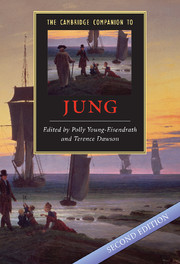Book contents
- Frontmatter
- New developments in the post-Jungian field
- Part I Jung’s Ideas and their Context
- 1 The historical context of analytical psychology
- 2 Freud, Jung, and psychoanalysis
- 3 The creative psyche: Jung’s major contributions
- 4 Psychic imaging: a bridge between subject and object
- Part II Analytical Psychology in Practice
- Part III Analytical Psychology in Society
- Index
2 - Freud, Jung, and psychoanalysis
from Part I - Jung’s Ideas and their Context
Published online by Cambridge University Press: 28 June 2008
- Frontmatter
- New developments in the post-Jungian field
- Part I Jung’s Ideas and their Context
- 1 The historical context of analytical psychology
- 2 Freud, Jung, and psychoanalysis
- 3 The creative psyche: Jung’s major contributions
- 4 Psychic imaging: a bridge between subject and object
- Part II Analytical Psychology in Practice
- Part III Analytical Psychology in Society
- Index
Summary
“One repays a teacher badly if one remains only a pupil. / And why, then, should you not pluck at my laurels? / You respect me; but how if one day your respect should tumble? / Take care that a falling statue does not strike you dead! / You had not yet sought yourselves when you found me. / Thus do all believers-. / Now I bid you lose me and find yourselves; a/ nd only when you have all denied me will I return to you.” (Nietzsche, Thus Spoke Zarathustra, quoted Jung to Freud, 1912) / Freudian psychoanalysis, a related body of clinical technique, interpretive strategy, and developmental theory, was articulated piecemeal in dozens of publications by Sigmund Freud, spread over a period of forty-five years. The structure of Freud's monumental twenty-three-volume corpus has been the subject of thousands of critical studies, and Freud is still one of the most popular subjects for biographers. Despite this wealth of writing, however, the effectiveness of Freud's therapeutic methods and the adequacy of his theories remain subjects of animated debate. This chapter is concerned with the status of Freud's theorizing during his collaboration with Carl Jung, and with the mutual influence of each thinker on the other in the years following their estrangement. Jung's seven-year discipleship with Freud was a turning point in his emergence as a distinctive thinker of world importance (Jung, 1963). At the beginning of his fascination with Freud in 1906, Jung was a thirty-one-year-old psychiatrist of unusual promise, with a gift for psychological research and a prestigious junior appointment at one of Europe's major centers for treatment of psychotic disorders (Kerr, 1993). By the time of his break with Freud in 1913, Jung was internationally known for his original contributions to clinical psychology and for his forceful leadership of the psychoanalytic movement. He was also the author of the seminal work, Transformations and Symbols of the Libido (CW 5), that would define his independence from that movement.
- Type
- Chapter
- Information
- The Cambridge Companion to Jung , pp. 39 - 56Publisher: Cambridge University PressPrint publication year: 2008

